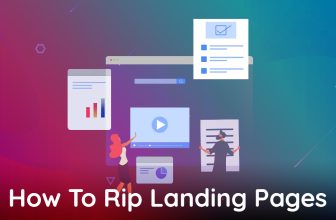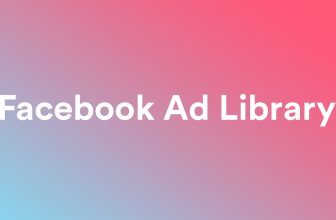
Landing pages typically have a decent average conversion rate of about 9.7%. But with the right design tweaks, they can become even more valuable in your marketing arsenal.
Think of landing pages as the first handshake with your potential customers. You’ve got less than a minute to impress them. That’s why putting some effort into designing your landing page can really pay off.
So, what makes a winning landing page? Here are some key ingredients that every landing page should have.
TABLE OF CONTENT:
Create User Focused Content
Your website and its pages should speak directly to your target audience. Consider the products or services you offer and the demographic you’re aiming to attract. Your audience’s preferences should guide every creative decision you make.
Landing pages offer a unique opportunity to tailor your content to specific audiences. When crafting a landing page, think strategically about how to capitalize on this. Put yourself in your customer’s shoes and consider what would catch their eye.
Research shows that users typically start scanning a webpage from the upper left-hand corner, then move downward and to the right. Keep this in mind when arranging your design elements for maximum impact.
Furthermore, your layout and messaging should resonate with your target audience. For instance, if you’re selling cosmetics, consider a clean and feminine design to appeal to your demographic.
Create Simply But Catchy Headlines
Your headline serves as the focal point of your landing page and is the first thing users notice. It’s crucial to craft a strong and compelling headline that clearly communicates what you’re offering.
A catchy headline can grab the reader’s attention and pique their interest. While single-word headlines may look sleek, they often lack clarity and value. Aim for a headline that is concise yet informative, typically consisting of six to eight words. Research shows that headlines within this word count range tend to have a higher click-through rate (CTR) of 21%.
If you feel your headline needs further explanation, consider adding a supporting headline. This allows you to expand on your main headline and provide additional details about your products or services, without cluttering the page.
Optimize Your Landing Page for Speed
Users expect websites to load quickly, and if your landing page takes more than three seconds to load, you risk losing potential customers. A slow-loading page can lead to a higher bounce rate and negatively impact your organic search ranking.
To gauge your page’s performance, use tools like Google PageSpeed Insight, which evaluates your page’s speed on both desktop and mobile platforms.
One common cause of slow loading times is excessive media content. Too many images or videos can strain your hosting server, leading to delays. Optimizing your images by compressing them can significantly improve loading speed and reduce unnecessary redirects. Additionally, caching can help by minimizing the effort required to load a page.
If these measures don’t improve loading times, consider switching to a new hosting server. Your hosting provider plays a crucial role in your website’s performance, so investing in reliable hosting is essential for maintaining a fast and efficient landing page.
Respont to User Concerns
When crafting your landing page content, focus on addressing the needs and concerns of your audience. People visit websites seeking solutions, so make sure your product or service descriptions directly speak to their pain points. Leveraging emotions in your messaging can be a powerful marketing tactic, as it can evoke hope or desire and drive users to take action.
However, it’s crucial to strike a balance between conveying value and avoiding misleading promises. While a well-designed landing page can convert users, it’s important to remember that it doesn’t guarantee long-term loyalty. Therefore, it’s essential to avoid making false claims and instead provide transparent information about how your offering addresses users’ needs.
This is where your unique selling proposition (USP) comes into play. Your USP highlights what sets your product or service apart from competitors. Incorporating your USP into your copy, especially in the main headline, helps to clearly communicate your value proposition to users and set realistic expectations.
By being honest and transparent about your USP, you can establish trust with your audience and increase the likelihood of converting visitors into customers.
Use Colors That Work Well for Branding
Color plays a significant role in both psychology and marketing, as it can evoke specific emotions and influence how potential customers perceive your products or services. Different colors, tones, and hues have distinct psychological effects, which can impact consumer behavior.
When choosing colors for your brand or marketing materials, it’s essential to consider the emotions and qualities you want to convey. For instance, blue is often associated with feelings of serenity and calmness, making it suitable for businesses offering wellness or self-care products. On the other hand, red tends to evoke excitement and can be effective for brands in the fitness industry, as it can inspire action from users.
However, it’s crucial to maintain consistency with your brand’s overall identity and messaging when selecting colors. Consistent branding helps enhance brand recognition, making it easier for customers to identify your brand in various contexts. For example, the combination of white and red instantly brings to mind Coca-Cola, while yellow and red are strongly associated with McDonald’s.
Ultimately, consider the emotions and perceptions you want to evoke in your target audience when choosing colors for your brand. By aligning your color choices with your brand’s identity and desired image, you can effectively communicate your message and enhance brand recognition.
Use Images to Draw Attention
Visual content such as pictures and videos can significantly boost engagement on your landing page, with studies showing a 94% increase compared to text-only content. Humans process visual information much faster than text, making visuals a powerful tool for creating effective landing pages.
When incorporating images and videos into your landing page, it’s essential to choose visuals that align with your content and effectively communicate your message. For product landing pages, including high-quality images of the product from various angles can help users better understand what to expect. For example, if you’re selling bags, showcasing images of the front, back, and interior can provide a comprehensive view of the product.
While visual media can enhance engagement and reduce bounce rates, it’s important to keep videos short and simple to prevent slowing down the page’s loading speed. Additionally, ensure that the visuals you choose accurately represent the product in an authentic way and don’t distract users from the main point of your landing page. By selecting relevant and compelling visuals, you can effectively convey your message and capture users’ attention.
Consider Using Animations As Well
Animation is another powerful tool in visual media that can enhance your ad campaign and drive engagement. By incorporating dynamic colors and bouncing objects, animation can capture users’ attention and draw their focus to the product you’re promoting.
One of the key advantages of animation is its ability to add momentum and increase user interaction with your page. Animated elements can infuse personality into your product, making your brand feel more approachable and relatable to your audience.
The versatility of animation allows you to integrate it seamlessly into various aspects of your landing page. Whether it’s adding a scroll feature, animating typography, or showcasing your product in action, animation offers endless creative possibilities.
However, it’s essential to use animation judiciously to avoid overwhelming users or slowing down the page’s loading speed, which can ultimately lead to higher bounce rates. By incorporating animation thoughtfully and strategically, you can enhance the user experience and effectively convey your message to your audience.
Make Your Landing Page Mobile Friendly
More than half of American consumers discover new brands through their mobile devices, highlighting the importance of optimizing your landing page for mobile use. Failure to do so could limit your reach and potential customer engagement.
Before publishing your landing page, it’s crucial to test its performance on mobile devices. Some elements, such as banners, may not translate well to mobile platforms. If necessary, consider creating a separate landing page specifically tailored for mobile devices.
Attempting to cram desktop-designed content onto a mobile screen can lead to a cluttered appearance and slower loading speeds. Opting for a single-column layout for mobile-responsive pages creates a more user-friendly experience, akin to scrolling through social media platforms like Facebook or Twitter.
Accessibility is also key when designing mobile landing pages. Ensure texts have high contrast for readability and avoid using complex fonts or overly small sizes. Utilizing white space effectively and minimizing the number of visuals can further enhance mobile usability.
Lastly, streamline navigation menus for mobile users to prevent confusion and ensure seamless browsing. By prioritizing mobile optimization and accessibility, you can maximize the effectiveness of your landing page across various devices and cater to a broader audience.
Provide Social Proof
When making online purchases or dining out, people often rely on reviews to gauge the quality and value of a product or service. Whether it’s checking Google reviews before trying a new restaurant or reading customer testimonials before buying a product, social proof plays a crucial role in decision-making.
By incorporating social proof into your landing page, you can instill confidence in potential customers and persuade them to take action. Testimonials, customer reviews, and statistics demonstrating customer satisfaction are all effective forms of social proof.
Displaying awards or accolades your brand has received further reinforces its credibility and value. By showcasing social proof directly on your landing page, you eliminate the need for users to seek out reviews elsewhere, keeping them engaged and more likely to convert.
Show Points of Contact
To make your landing page more engaging and interactive, it’s essential to include various points of interaction. This could include adding social media links, contact information such as phone numbers or email addresses, online customer service options, and even a physical store address with a Google Maps link.
Offering users multiple options for communication allows them to choose the method most convenient for them, whether it’s reaching out via phone, email, or social media platforms. Including social media buttons encourages users to share your content or products, potentially leading to increased visibility and new followers on your social channels.
Use a Straightforward Call To Action
Every landing page needs a clear and compelling call to action (CTA) to prompt users to take the desired action. Whether it’s clicking a button or filling out a form, the CTA should be prominently displayed and easy to find.
To make your CTA stand out, use a bold color and concise, action-oriented language. For example, phrases like “check out now” or “start my free trial” are effective at encouraging users to click. If your CTA is a form, only ask for essential information and assure users of their data privacy.
By making your CTA clear and user-friendly, you can increase the likelihood of users taking the desired action, whether it’s making a purchase, signing up for a service, or subscribing to a newsletter.
Conclusion
Designing a landing page requires attention to detail, but with these tips, you can create pages that effectively drive conversions. Always prioritize the user experience by ensuring your page is easy to read and understand.
Start strong with a compelling headline and end with a clear, actionable call to action. By following these guidelines, you can create landing pages that engage users and encourage them to take the desired action.







